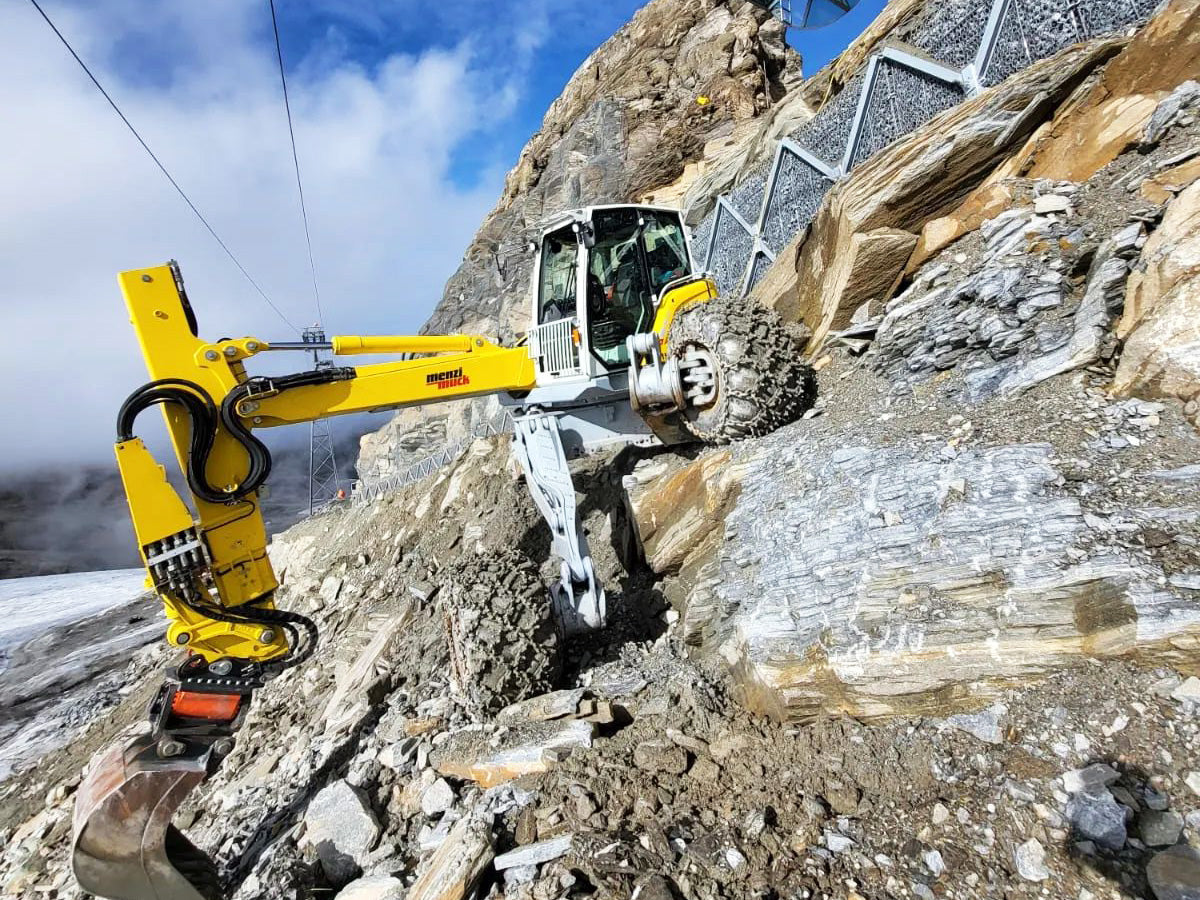
The Mechanics of Spider Excavators (How It Works)
To understand how a spider excavator works, it's crucial to delve into its unique mechanics and operations. Unlike traditional excavators, which often rely on tracks or wheels, spider excavators such as Menzi Muck employ independently moving legs, making them highly versatile for tackling challenging terrains. Here's a step-by-step guide:
-
Hydraulic System: The spider excavator's operation begins with the hydraulic system. Hydraulic fluid is pumped into cylinders, pushing pistons that drive the machine’s various parts. This includes the boom, stick (arm), and bucket, which function similarly to traditional excavators. The hydraulic cylinders also control the functioning of the legs, enabling precise adjustments for stability and movement.
-
Adjustable "Walking" Legs: The defining feature of a spider excavator is its four independently operated legs. The machine can "walk" by adjusting the position of each leg, much like a spider. This ability allows the excavator to navigate complex and uneven terrains, such as steep slopes, rocky grounds, and even water up to five feet deep. When gaps are wider than the reach of its legs, the boom can assist in maneuvering by acting as an additional support point.
-
Optimize Control & Stability for all Terrains: Each leg of the spider excavator is capable of independent movement, controlled by hydraulic cylinders. The legs can be positioned to provide optimal stability by adjusting their length and angle. This adaptability is crucial for working on steep terrains or in tight spaces where conventional equipment would struggle. The machine's multi-pedal system gives the operator full control over each appendage, enabling the excavator to maintain a steady and secure footing.
-
Environmentally Friendly: Spider excavators are designed with environmental considerations in mind. The excavator’s legs reduce the need for extensive terrain modifications, helping preserve the natural landscape.
-
Specialized Attachments: The spider excavator's versatility is further enhanced by various attachments. These include front and rear mountain stabilizers, hydraulic telescopic stabilizers, and demountable spindle attachments with impellers. Such attachments allow the machine to adapt to specific tasks, such as power pole excavation, right-of-way clearing, and installing rock bolts or tension anchors on steep slopes.
-
360-degree Cab Rotation: The spider excavator's cab is situated on a rotating platform known as the "house." This design provides 360-degree visibility and control, crucial for navigating and operating in various terrains. The operator uses levers and foot pedals to control the hydraulic system, maneuvering the boom, arm, bucket, and legs with precision.
-
High-tech Applications: Spider excavators are used in a variety of settings, from emergency response and environmental restoration to power line construction in remote areas. Their ability to access difficult terrains without requiring roads or additional support structures makes them invaluable for certain projects.
A spider excavator works through a combination of hydraulic system controls, independently moving legs, environmental safeguards, and specialized attachments, making it a versatile and efficient tool for challenging excavation tasks. For information on spider excavators, and Menzi Muck 545x or other M5 or M4 models contact us at www.evolutionmechanical.ca.